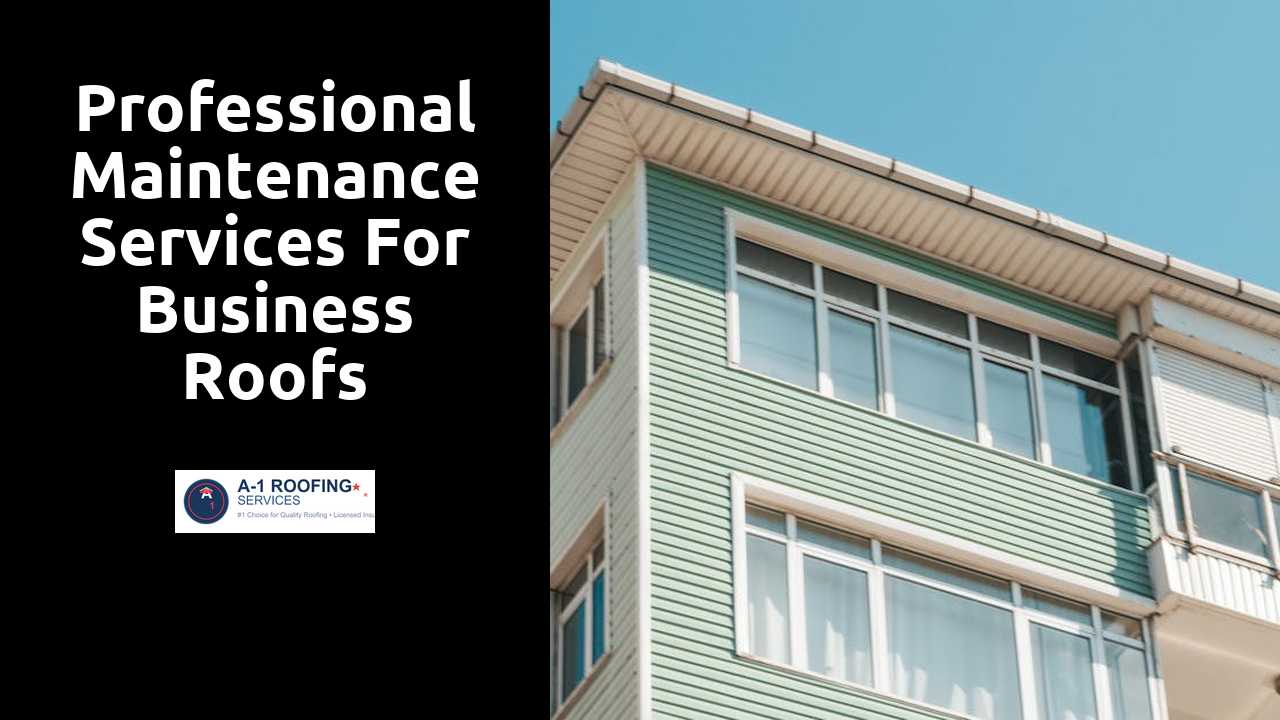
Professional Maintenance Services for Business Roofs
Table Of Contents
Maintenance Plans for Different Roof Types
Businesses often rely on specific maintenance plans tailored to their roof type to ensure longevity and performance. Flat roofs require distinct care due to their unique structure and drainage issues. Regular inspections can address problems such as ponding water and accumulated debris. Cleaning the drainage systems and checking for leaks are crucial steps in preserving the integrity of flat roofs.
In contrast, sloped roofs demand a different set of maintenance practices. They usually have better water runoff, which minimizes some risks associated with flat roofs. However, issues such as gutter clogging and shingle deterioration should not be overlooked. Routine inspections and timely repairs are essential to prevent more significant problems, ensuring that both types of roofs withstand various weather conditions and maintain high efficiency.
Continue reading this article for more information.
Tailoring Services for Flat vs. Sloped Roofs
Flat roofs require a distinct approach in their maintenance services due to their unique design and drainage issues. Routine inspections are crucial for identifying standing water, which can lead to leaks and structural damage. Additionally, special attention must be given to the materials typically used, such as built-up roofing or single-ply membranes, as each material has specific maintenance needs. Cleaning debris and ensuring proper drainage systems are in place help prolong the lifespan of the roof and enhance its overall performance.
In contrast, sloped roofs offer their own set of challenges, primarily related to the pitch and the potential for water runoff. Maintenance strategies should focus on clearing gutters and downspouts to prevent clogs that can result in water pooling and exacerbated wear. Inspection of shingles or tiles is essential to check for damage from weather elements and to ensure that all components are securely in place. Tailoring services to meet the needs of sloped roofs involves a proactive approach to maintaining the integrity of the roofing structure through regular, detailed evaluations.
Cost Factors in Roof Maintenance
Several elements can influence the cost of roof maintenance for businesses. Labor rates often vary based on geographical location and the complexity of the job. Additionally, the type of materials used during maintenance procedures will impact the overall cost. For instance, using high-quality materials can demand a higher upfront investment but may yield long-term savings due to their durability and reduced frequency of repairs. Seasonal factors may also play a role, as certain times of the year may require specific services, reflecting in price adjustments.
Another consideration involves the age and condition of the roof itself. Older roofs may need more frequent inspections and repairs compared to new installations, leading to increased ongoing expenses. Routine evaluations can help identify minor issues before they escalate, ultimately saving money in the long run. Businesses should also account for potential emergency repairs, as unexpected damage could result in additional costs that disrupt budgeting plans. Understanding these factors can assist companies in making informed decisions regarding their roof maintenance strategies.
Budgeting for Long-Term Care
Creating a budget for long-term roof care requires a detailed understanding of the specific needs of each type of roof. Assessing the material and structural attributes helps determine maintenance frequency and necessary services. Flat roofs may require more regular inspections due to their susceptibility to water pooling, while sloped roofs often need less frequent attention but still demand specific tasks like debris removal and gutter maintenance. Business owners should account for both standard maintenance and unexpected repairs in their financial planning.
Incorporating a maintenance fund into the overall budget can alleviate financial strain when emergencies occur. Setting aside a percentage of the total roof replacement cost annually provides a buffer against sudden expenses. This proactive approach not only extends the life of the roof but also protects the business from potential losses associated with roof failures. By forecasting these expenses accurately, businesses can ensure they are financially prepared and thus mitigate risks associated with roof neglect.
The Impact of Neglected Roofs on Business
A neglected roof can lead to a plethora of issues that adversely affect a business's operations. Water leaks may damage interior infrastructure and inventory, leading to costly repairs and replacements. Additionally, compromised roofs pose safety risks to employees and customers, which can result in liability claims and insurance increases. Inconsistent maintenance can escalate minor issues into major problems, potentially leading to more significant downtime.
The financial implications extend beyond immediate repair costs. A deteriorating roof can decrease a property's value, affecting market perception and hindering potential sales or leases. Unscheduled repairs often disrupt business activities, resulting in lost productivity and revenue. In an era where customer satisfaction and brand reputation are paramount, a well-maintained roof reflects professionalism and care in a business's operations.
Potential Risks and Consequences
Ignoring regular roof maintenance can lead to significant problems for businesses. Water leaks may develop, causing damage to both the interior and exterior of the building. Mold growth can occur, which poses health risks to employees and customers. Delaying repairs may also compromise the structural integrity of the roof, resulting in more extensive and costly repairs down the road.
A neglected roof can lead to increased operational costs over time. Higher energy bills may result from inadequate insulation or ventilation, affecting the overall efficiency of the building. Additionally, potential safety hazards can arise, putting employees and visitors at risk. Not addressing these concerns can impact a business's reputation and bottom line, leading to decreased customer trust and loyalty.
Related Links
How Weather Impacts Commercial Roofing CareBest Practices for Routine Commercial Roofing Inspections